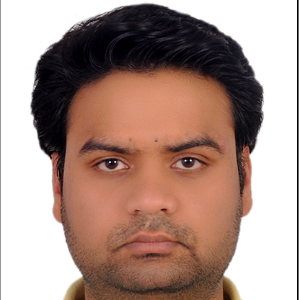Title : Hypertrophic cardiomyopathy contemporary outcomes of family screening and the necessity of whole exome sequencing in Indian sub-continent
Abstract:
Background and Aim: Hypertrophic cardiomyopathy (HCM) is one of the common and primary genetic cardiomyopathy characterized by inappropriate hypertrophy of the interventricular septum and ventricle with variable clinical presentations, one of the commonest being sudden cardiac death among young adult athletes. Previously, genetic mutations were commonly observed in sarcomere-related genes however, after the advent of NGS-based sequencing, mutations in various other non-sarcomeric genes are also being reported in the literature. In USA and Europe, prevalence has been reported as 1:500, however, it is not understood for Indian population. The current study aims to understand the clinical features, genetic mutations, severity and familial penetrance in HCM patients who are recruited at a tertiary care centre in northern India.
Methods: Clinical and radiological parameters like ECG, echocardiography and cardiac MRI were used to characterize and diagnose the cases of HCM after obtaining the written informed consent. The detailed family pedigrees were prepared for the probands. 5 ml peripheral blood in an EDTA vial is used for DNA extraction, purification and quantification. WES was performed on the Illumina Novaseq 6000 platform. Further validation of the variant in probands as well as the family screening was done using Sanger sequencing. The first-degree relatives were genetically screened in all the families which were accessible Additionally, phenotypic assessment was performed for them including ECG, echocardiography and cardiac MRI. Pathogenicity and severity assessment of the variants was documented either by insilico analysis and/or through literature survey.
Results and Conclusion: A total of 80 HCM patients have been enrolled in the study over three years (2021-2024). The mean age of presentation was 41.1 years (range 9 to 80 years). 6 were in the pediatric age group. There was male predominance (86.2%) with an M:F ratio of 7:1. Percentage of patients belonging to NYHA class II was highest as 57.2%, followed by class III. Patients with class I and IV were 3.75% each. Of total, 13 were obstructive and 67 were of non-obstructive type. 11 patients underwent heart transplantation. Detailed family history revealed 48.75% (39) of the cases were familial HCM. Whole exome sequencing was performed in 65 cases, that revealed 79 different variants in the following genes: TNNT2, MMP9, MYOM1, FHOD3, FLNC, CFTR, AKPK3, VWF, SGCD, CAP, PKP2, TMEM43, SCN5A, MYO6, CAP2, PNPLA2, ALDOA, MYL3 TNNI3, NEXN, AGL, MYO6, HAND2, PRKAG2, MYBPC3. Most of the variants were observed in the TTN gene followed by ALPK3 which is different from Western literature where MYH7 and MYBPC3 genes are most commonly involved in HCM. Out of these 79 variants, 19 were predicted to be pathogenic/likely pathogenic by FATHMM, Mutation Taster, SIFT and Polyphen and the rest were predicted to be variants of unknown significance. All the variants were further screened in the close family members with routine ECHO screening which led to the identification of 17 asymptomatic HCM cases. Genotypic and phenotypic correlation was analyzed and compared with risk stratification. For further confirmation of those mutated variants, in silico prediction was performed in Zebrafish and mouse models to find out the effect of the variants for assessment of pathogenicity.
Audience Take Away:
- This study highlights the spectrum of HCM in the Indian population, which has not yet been explored
- Indian population is very diverse due to its rich history and several cultural practices. Hence, this study about the genotypic and phenotypic spectrum from India will help audiences from such genetically diverse nations to study specific populations
- Yes, this research will help researchers and academicians to showcase the genetic heterogeneity of the HCM disease. Also, the characterization of the variants using in silico models will help to further expand the genetic spectrum
- Yes, a streamlined analysis pipeline for understanding genotype-phenotype correlation has been provided by this study
- It will provide new information to assist in design problem such as designing of gene panels for South Asian population to understand the HCM genotypes
- Other benefits include studying the importance of performing the pedigree analysis as several asymptomatic individuals were found which could be managed accordingly



